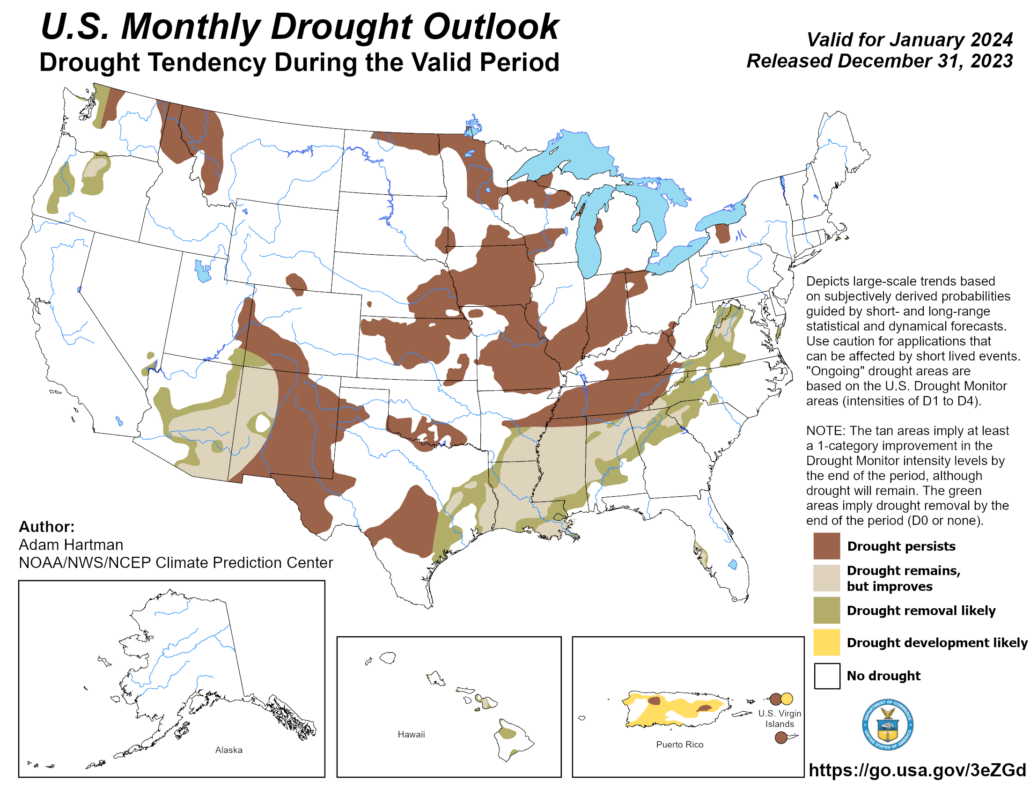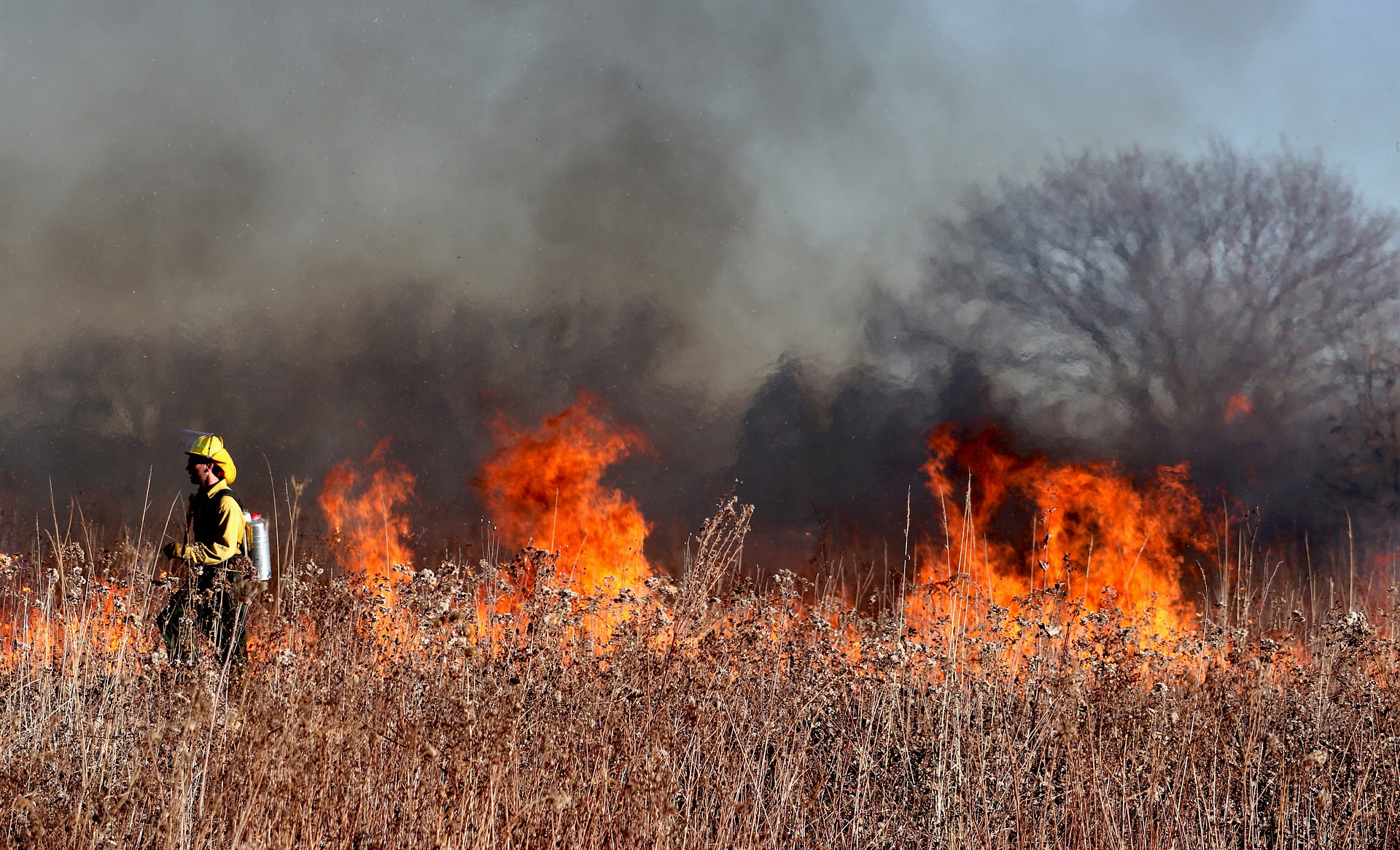The National Interagency Fire Center published the wildfire outlook for the period of January 2024 through April 2024. This outlook is a synthesis of predictions from both Geographic Area Predictive Services units and the National Predictive Services and is crucial resource for wildland fire management. The full wildfire outlook can be located here.
Overview of Fire Activity in December 2023
December 2023 witnessed a continuation of the downward trend in fire activity across the United States, a trend that began in late November. The second half of the month saw particularly minimal fire activity. Notably, a few large fires did ignite briefly in the Eastern, Southern, and Southwest regions, and an early December Santa Ana wind event sparked a significant fire in Southern California. Remarkably, the total acreage affected by fires in the U.S. for 2023 was just over 37% of the 10-year average, with the number of fires also slightly below average, at 95%.
Varied Weather Patterns Across the Country
The weather across the contiguous United States (CONUS) showed striking variations. Some regions experienced precipitation well above the norm, especially across the central and northern Plains into Minnesota. In contrast, areas like the central and southern Great Basin and the northern Rockies faced notably below-normal precipitation levels. Temperature-wise, most of the U.S. enjoyed above-average warmth, with the most significant deviations found from central and eastern Montana through the northern Plains into the Great Lakes. Southern California experienced dry, offshore winds in early December, while Hawai’i saw increased trade winds and dry conditions, leading to a rise in fire activity towards month-end.
Drought Conditions and Improvements
While extreme to exceptional drought conditions persist in parts of Louisiana and Mississippi, there have been slight improvements in drought situations in the Lower Mississippi and Tennessee Valleys, the Gulf Coast, Mid-Atlantic, and northwestern U.S. Conversely, drought conditions have intensified in areas of the Mid-Mississippi and Lower Ohio Valleys.

Climate Predictions and Wildfire Potential Outlook
The Climate Prediction Center and Predictive Services’ December outlooks suggest above-normal temperatures for much of the West Coast and the northern third of the U.S., while the Southwest, southern Plains, and Southeast can expect temperatures near or below normal. In terms of precipitation, the forecast indicates above-normal levels for areas like Arizona, southern California, southern Nevada, the central and southern Plains, and the Southeast, extending into Florida. However, the Northwest, northern Rockies, and parts of the Great Lakes into the Ohio Valley are likely to see below-normal precipitation, aligning with a mature El Niño pattern.
Wildfire Outlook for Early 2024
Looking ahead to early 2024, Hawai’i is forecasted to face above-normal significant fire potential into April. Similar predictions hold for Puerto Rico and the U.S. Virgin Islands in March and April. The Southern Area of the U.S. is expected to see a spread of below-normal significant fire potential across various regions, including the northeast Gulf Coast and Florida in January, extending into parts of Oklahoma, Texas, the Carolinas, and southeast Virginia. While much of this area will continue to experience below-normal potential in March, western Arkansas may return to normal fire potential. April forecasts indicate a return to normal potential for most of the Southern Area, except for specific coastal regions and Florida. Above-normal fire potential is likely to continue across western Kentucky and the Mid-Mississippi and Ohio Valleys, with an expansion into Illinois, Indiana, and southern Michigan.




